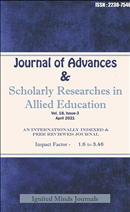A Study of Graph Theory to the Mathematical Modeling of Group Theory
Exploring the Relationship between Graph Theory and Group Dynamics
Keywords:
Graph Theory, Mathematical Modeling, Group Theory, Neighborhood Division, Community Fracture, Norm-related Confrontation, Mathematical Model, Vertices, Edges, Undirected GraphsAbstract
Mathematical simulation allows for the study of many processes at the same time while still allowing for the interpretation of relationships. We are especially interested in neighborhood division’s community fracture, which occurs as members of a group leave. This may be attributed to perceived discrepancies with other members of the party as a result of norm-related confrontation, for example (such as extreme actions by some members).we discusses some concepts mathematical model of based on graph theory, mathematical modeling based on graph theory, groups ,subgroups ,branches of group. A graph in this context is made up of vertices (also called nodes or points) which are connected by edges (also called links or lines). The difference is made between undirected graphs, with borders symmetrically connecting two vertices, and guided graphs with edges asymmetrically connecting two vertices, Finite group theory and representation of groups.Published
2021-04-01
How to Cite
[1]
“A Study of Graph Theory to the Mathematical Modeling of Group Theory: Exploring the Relationship between Graph Theory and Group Dynamics”, JASRAE, vol. 18, no. 3, pp. 42–47, Apr. 2021, Accessed: Jul. 03, 2024. [Online]. Available: https://ignited.in/jasrae/article/view/13081
Issue
Section
Articles
How to Cite
[1]
“A Study of Graph Theory to the Mathematical Modeling of Group Theory: Exploring the Relationship between Graph Theory and Group Dynamics”, JASRAE, vol. 18, no. 3, pp. 42–47, Apr. 2021, Accessed: Jul. 03, 2024. [Online]. Available: https://ignited.in/jasrae/article/view/13081








